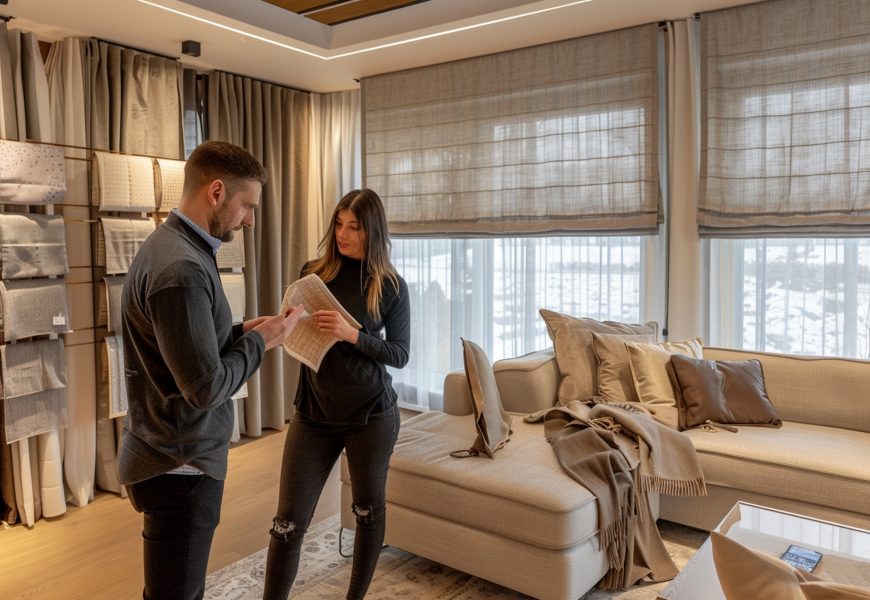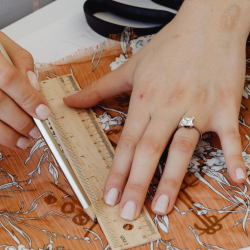Many homeowners always ask how to design home interiors to make their rooms practically useful and appealing in all aspects. Whether you’re remodeling or starting from scratch, developing an excellent design needs careful preparation, planning, imagination, and attention to detail.
In this article, you’ll learn how to develop house designs that will fit any lifestyle, look at bedroom home design ideas for comfort, and discover current home interior design trends. We’ll also discuss house interior design expenses and how to select furniture that will improve your room. By the end, you’ll have all the supplies and inspiration you need to create your perfect house!
Contents
How to Design Home Interior: A Complete Guide to Modern Living Spaces ……………………………….. 1
Step-by-Step Guide: How to Design Home Interior ……………………………………………………………. 1
1. Define Your Style and Needs ………………………………………………………………………………….. 2
2. Plan the Layout …………………………………………………………………………………………………… 2
3. Choose a Color Scheme and Materials……………………………………………………………………… 2
4. Select Furniture and Decor ……………………………………………………………………………………. 2
5. Focus on Lighting and Ambience …………………………………………………………………………….. 2
6. Budgeting and Cost Planning …………………………………………………………………………………. 2
7. Final Touches and Personalization …………………………………………………………………………… 2
How to Design Home Plans for Functional Spaces …………………………………………………………….. 2
Creative Home Interior Design Ideas for Every Room…………………………………………………………. 3
Modern Home Interior Design Trends You Should Try ………………………………………………………… 3
Understanding Home Interior Design Costs……………………………………………………………………… 3
Furniture Design Ideas for Home Interiors ………………………………………………………………………. 4
Conclusion……………………………………………………………………………………………………………….. 4
Step-by-Step Guide: How to Design Home Interior
Designing an apartment interior involves imagination, utility, and foresight. Whether you’re renovating just one room or a whole house, using a systematic approach provides a well-balanced and elegant environment. Here’s a step-by-step tutorial that will help you.
- Define all the Aesthetics and Needs
- Plan the arrangement of all the items
- Choose a Color Scheme and all surrounding Components
- Select Furniture and decoration tools
- Focus on Lighting and Compositions of elements
- Cost and Cost Planning of decor
- Final Touches and Personalization on edge
1. Define Your Aesthetic and Needs
Begin by determining your unique style and the function of each place. Do you prefer modern home interior design or a more traditional look? Create an efficient strategy that takes into account lighting, storage, and comfort.
2. Plan the Arrangement of items
Before purchasing furniture, focus on how to design home plans that suit your lifestyle. Floor design may help you select furniture arrangements and maintain good flow in the interior. When designing the layout, keep traffic flow, space, and accessibility in account.
3. Choose a Color Scheme and Components
Select a cohesive color palette that enhances the overall aesthetics. Soft neutrals, dramatic accents, and earthy tones may help define the vibe of your house. Use different materials, such as wood, glass, and metals, to add depth and texture to the interior.
4. Select Furniture and Decorations
Furniture design for home interiors plays a crucial role in aesthetics and functionality. Invest in space-saving furniture for tiny areas and statement items for bigger rooms. To give your home some flair, add décor items such as carpets, drapes, and artwork.
5. Focus on Lighting and Compositions
Proper lighting improves the appearance and warmth of any room. Layer lighting—ambient, task, and accent—to create a welcoming ambiance for the people. Use floor lamps, pendant lights, and natural light sources wisely, as they can be used as decorations as well as for light sources.
6. Cost and Cost Planning
Understanding home interior design costs is essential to avoid overspending. Break out the costs for furniture, decor, and remodeling supplies. Choose cheaper alternatives that do not sacrifice style or quality.
7. Final Touches and Personalization
Personalize your space with plants, books, and one-of-a-kind décor elements that represent your individuality in the room and surroundings. Before finishing the design, make sure everything is properly organized in its respective places.
By following all of these steps mentioned, you can easily master how to design home interior spaces that are both stylish and practical. Whether you focus on bedroom home design or a complete home transformation overall the journey, thoughtful planning will ensure a beautiful and useful place.
How to Design Home Plans for Functional Spaces
Designing a functional home is the same as an adventure, which starts with a well-thought-out plan at first. How to design home plans effectively means balancing aesthetics with practicality to create a comfortable and efficient living space. Here are some key tips to achieve this.
· Assess Your Requirements: Think about your daily routine and lifestyle to decide how each room should be arranged and used efficiently.
· Make the Most of Your Space: Organize rooms in a way that allows for smooth movement and a natural flow between living, dining, and private areas.
· Enhance Natural Light: Incorporate windows and open areas to improve ventilation and reduce energy consumption.
· Combine Aesthetics with Practicality: Select furniture and layouts that not only enhance the look of your space but also serve functional purposes.
· Think Ahead: Design your space with adaptability in mind, ensuring it can cater to future changes or expansions.
By following these steps, you’ll know how to design home plans that are both beautiful and functional.
Creative Home Interior Design Ideas for Every Room
Looking for home interior design ideas to transform your space? Whether it’s the kitchen, living room, or dining area, thoughtful design choices can enhance both aesthetics and functionality. Here are some inspiring ideas to refresh your home.
· Living Room Elegance: Use neutral tones with statement furniture to create a cozy yet stylish ambiance. Add layered lighting and decorative elements for warmth.
· Kitchen Efficiency: Open shelving, smart storage, and a well-planned layout can make your kitchen both practical and visually appealing.
· Dining Area Charm: A statement dining table, pendant lighting, and coordinated décor can elevate the space for a welcoming feel.
· Bedroom Comfort: Soft lighting, textured fabrics, and a calming color palette make for a restful retreat.
· Small Space Hacks: Use mirrors, multifunctional furniture, and light colors to create an illusion of space.
These home interior design ideas cater to different styles and needs, helping you design a home that reflects your personality!
Modern Home Interior Design Trends You Should Try
Keeping up with the latest modern home interior design trends can give your space a fresh and stylish look. This year, minimalism, natural textures, and smart technology are redefining interiors, making homes more functional and visually appealing.
· Minimalist aesthetics: Clean lines, neutral tones, and clutter-free spaces create a sleek and sophisticated look.
· Natural elements: Wooden textures, stone finishes, and indoor plants bring warmth and harmony to modern spaces.
· Smart Homes: Voice-controlled lighting, automated blinds, and energy-efficient appliances enhance convenience.
· Bold Accents: Statement walls, unique lighting fixtures, and vibrant art pieces add personality.
· Sustainable Choices: Eco-friendly materials and upcycled furniture make modern home interior design both stylish and responsible.
Incorporating these trends can transform your home into a contemporary masterpiece!
Understanding Home Interior Design Costs
Planning a stylish and comfortable home involves expenses, and knowing the home interior design cost beforehand helps in budgeting wisely. Factors like room size, material quality, furniture choices, and professional fees influence the total cost. Custom designs and premium finishes can increase expenses, while smart planning can keep them within budget.
To manage home interior design cost efficiently, prioritize essential upgrades, compare material prices, and consider DIY options for smaller elements. Opting for multi-functional furniture and sustainable materials can also help save money without compromising on aesthetics. Proper budgeting ensures a beautiful home without overspending!
Furniture Design Ideas for Home Interiors
Selecting the right furniture design for the home interior is crucial for creating a balanced and stylish space. The furniture should not only indicate the overall look but also be useful and comfortable. Every element, whether it’s a comfy sofa for the living room, a sleek dining table, or clever storage solutions, should add to the overall mood of the home.
When creating furniture for your home, consider space-saving options such as modular furniture, multipurpose pieces, and ergonomic designs. Select materials and colors that complement your home’s decor, whether modern, minimalist, or classic. A well-planned furniture layout may transform your home into a useful and visually appealing space!
Conclusion
Designing a house is a personal experience that combines creativity, utility, and class. Each step, from layout planning to picking the perfect furniture design for your home interior, helps to make your place both attractive and functional. Whether you prefer modern home interior design or a more traditional look, thoughtful choices can bring your vision to life.
Remember, there are no strict rules—your home should reflect your personality and needs. Explore different home interior design ideas, experiment with colors and textures, and most importantly, enjoy the process of creating a space that truly feels like home!



















